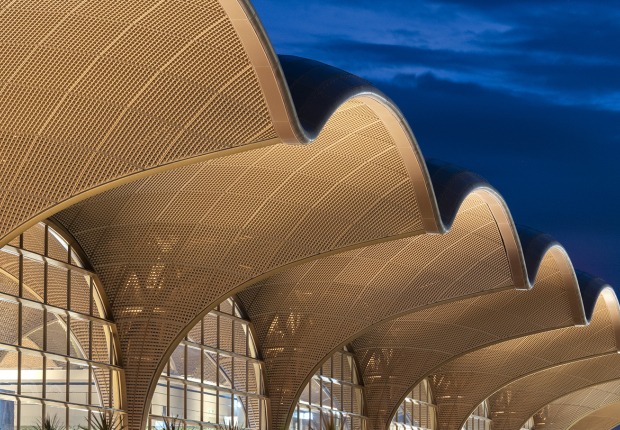The fundamental concept of the project is the adaptation capacity of cities to the emerging Climate Change. The objective is to generate sustainable spaces with an Urban Sustainable Dretching System (SUDS) that consists of generating surfaces permeable to rainwater that presents the least environmental impact with the use of ceramic tiles added to the intervention of the architects that transform it in an interesting, elegant, and innovative idea.
Description of project by Eduardo De Miguel and Enrique Fernández-Vivancos
The LIFECerSuds proposal addresses the problem of water and soil sealing in the city through the development of a Sustainable Urban Drainage System (SUDS) reusing low commercial value ceramics to produce a draining pavement. This initiative is developed within the framework of the European Union Program LIFE15CCA/ES/000091, with the specific purpose of focusing on adaptation to climate change while providing a sustainable urbanization solution.
This permeable paving system is based on the use of a paver obtained from low commercial value ceramic tiles. The process comprises tile division by cutting and subsequent edge arrangement and gluing of the resulting pieces to obtain a paving stone where the separation following the gluing process, less than a millimeter, guarantees transverse permeability to water while not compromising its use as an urban paving. The solution provides a new use for these hard-to market products, generates local employment and reduces the CO2 emissions which are usually linked to the production of urban pavements. It is, therefore, a circular economy process with evident environmental, social and economic benefits.
The multi-disciplinary process of design, prototyping and testing involved several institutions: the Institute of Ceramic Technology, the Ceramic Chair of Valencia, the University Institute of Water and Environmental Engineering Research of the Universidad Politécnica de Valencia, the City Council of Benicàssim and the company Trencadis de Sempre. Following this process, a demonstrator was built in the town of Benicàssim. The intervention addressed the redevelopment of Torre Sant Vicent Street, one of the most historical streets in the town.
In order to develop the proposal, an analysis of the area was made based on five sustainability indicators in public space: proportion of sealed soil, rainwater management, universal accessibility, sustainable mobility and environmental quality. Based on these parameters, the specific objectives and actions to be carried out were determined. These consisted of: reduction of sealed soil from the current 90% to 30%; sustainable management of urban runoff with a reduction of over 80% in the number of discharges into the network; reorganization of the existing road section guaranteeing universal accessibility; creation of a shaded route for pedestrians and cyclists; and 75% increase in the number of landscaped zones fitted to become living areas.
The final proposal is organized around rain gardens managing the rainwater from the roofs, which are used as garden areas, and pedestrian sidewalks working as infiltration areas and collecting runoff water, which is led to a channel-tank. This channel-tank, located under the bike path, stores the water needed for irrigation of the garden areas, thus directly linking the sustainable management of rainwater and the improvement of environmental conditions in public spaces.
PERMEABLE PAVING STONE MADE FROM REUSED CERAMIC TILES OF LOW COMMERCIAL VALUE
The permeable paving stone is obtained from the reuse of 330x330x8mm red body porcelain tiles of low commercial value, divided into 75mm strips by water cutting and glued with type C2 glue cement. The pavers are laid out to dry on a 3 cm thick layer, Ø2-6 mm levelling sand, which is separated by a geotextile from a 21 cm sub-base, Ø4-20 mm draining gravel and a Ø1-2 mm silica aggregate dressing. The tests carried out for this pavement section yielded a punctual breaking load of 4600 N at the most unfavorable point, and a permeability of 5580 mm/h, both within the recommended values for this type of draining urban pavements. In addition, a comparison of the environmental impacts of the life cycle was carried out: the environmental impact associated with the pavement in the GWP category (Global Warming Potential) is 17.9 kg CO2 eq. In comparison to a permeable concrete paver (23.9 kg CO2 eq), a reduction of 25% is obtained in the GWP impact category (kg CO2 eq). The installation of some 1950 m2 of permeable ceramic paver allowed for a reduction of 11.7 tons of equivalent CO2 emissions when compared to the installation of a permeable concrete paver.




























































